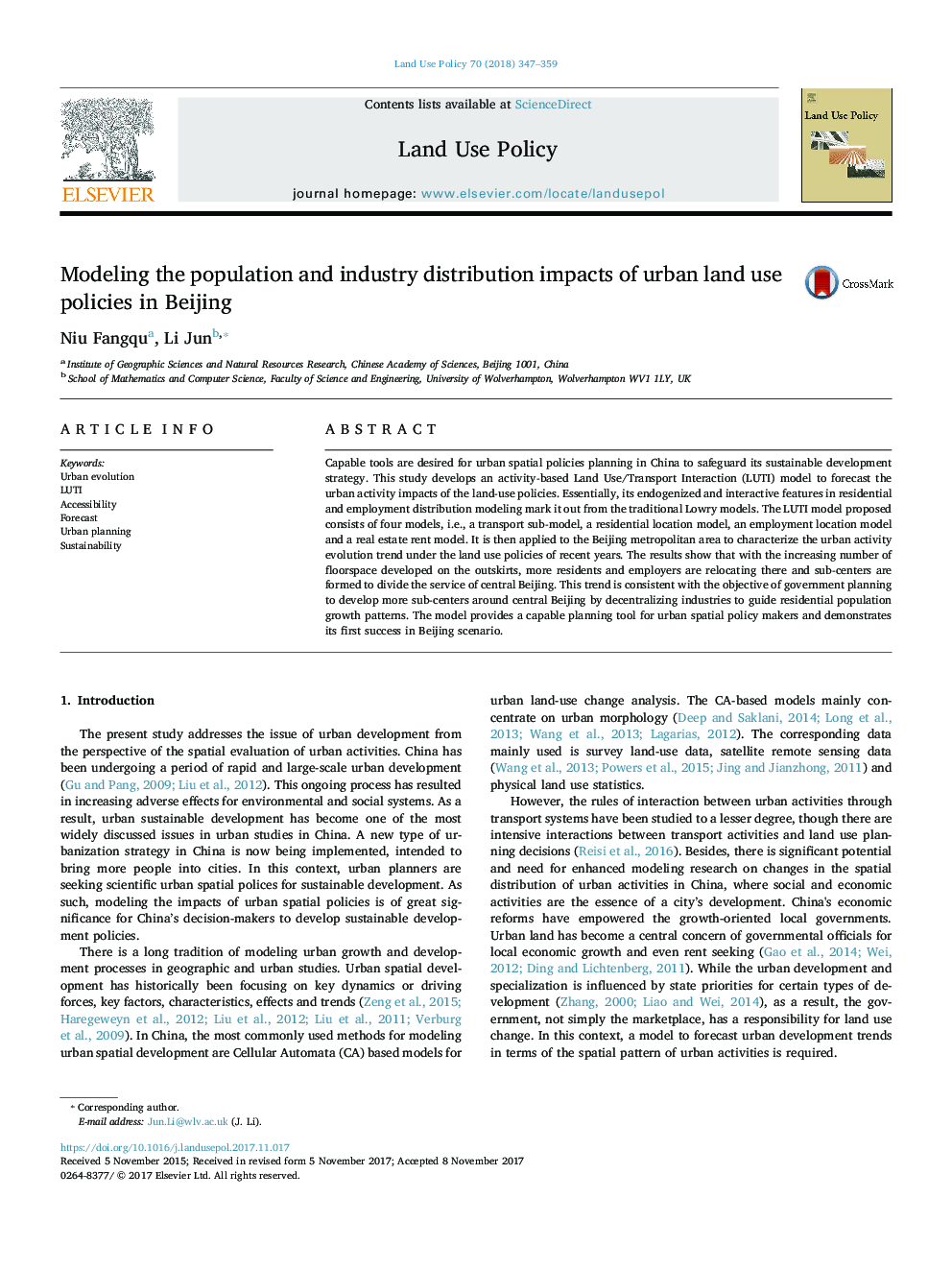| کد مقاله | کد نشریه | سال انتشار | مقاله انگلیسی | نسخه تمام متن |
|---|---|---|---|---|
| 6546766 | 1421813 | 2018 | 13 صفحه PDF | دانلود رایگان |
عنوان انگلیسی مقاله ISI
Modeling the population and industry distribution impacts of urban land use policies in Beijing
ترجمه فارسی عنوان
مدل سازی توزیع جمعیت و صنعت توزیع خط مشی های استفاده از زمین های شهری در پکن
دانلود مقاله + سفارش ترجمه
دانلود مقاله ISI انگلیسی
رایگان برای ایرانیان
کلمات کلیدی
تکامل شهری، لوتی، دسترسی، پیش بینی، برنامه ریزی شهری، پایداری،
موضوعات مرتبط
علوم زیستی و بیوفناوری
علوم کشاورزی و بیولوژیک
جنگلداری
چکیده انگلیسی
Capable tools are desired for urban spatial policies planning in China to safeguard its sustainable development strategy. This study develops an activity-based Land Use/Transport Interaction (LUTI) model to forecast the urban activity impacts of the land-use policies. Essentially, its endogenized and interactive features in residential and employment distribution modeling mark it out from the traditional Lowry models. The LUTI model proposed consists of four models, i.e., a transport sub-model, a residential location model, an employment location model and a real estate rent model. It is then applied to the Beijing metropolitan area to characterize the urban activity evolution trend under the land use policies of recent years. The results show that with the increasing number of floorspace developed on the outskirts, more residents and employers are relocating there and sub-centers are formed to divide the service of central Beijing. This trend is consistent with the objective of government planning to develop more sub-centers around central Beijing by decentralizing industries to guide residential population growth patterns. The model provides a capable planning tool for urban spatial policy makers and demonstrates its first success in Beijing scenario.
ناشر
Database: Elsevier - ScienceDirect (ساینس دایرکت)
Journal: Land Use Policy - Volume 70, January 2018, Pages 347-359
Journal: Land Use Policy - Volume 70, January 2018, Pages 347-359
نویسندگان
Niu Fangqu, Li Jun,
